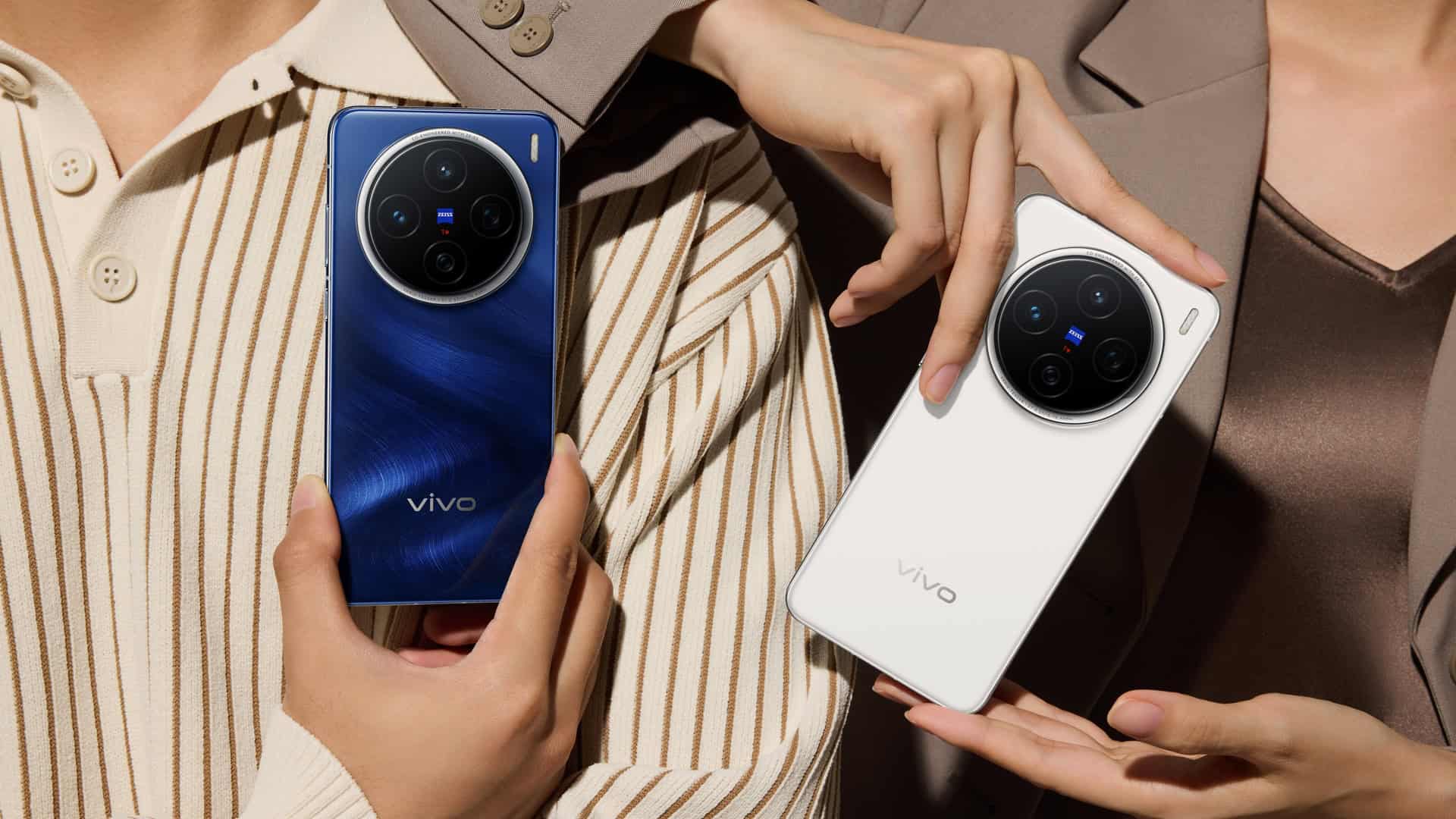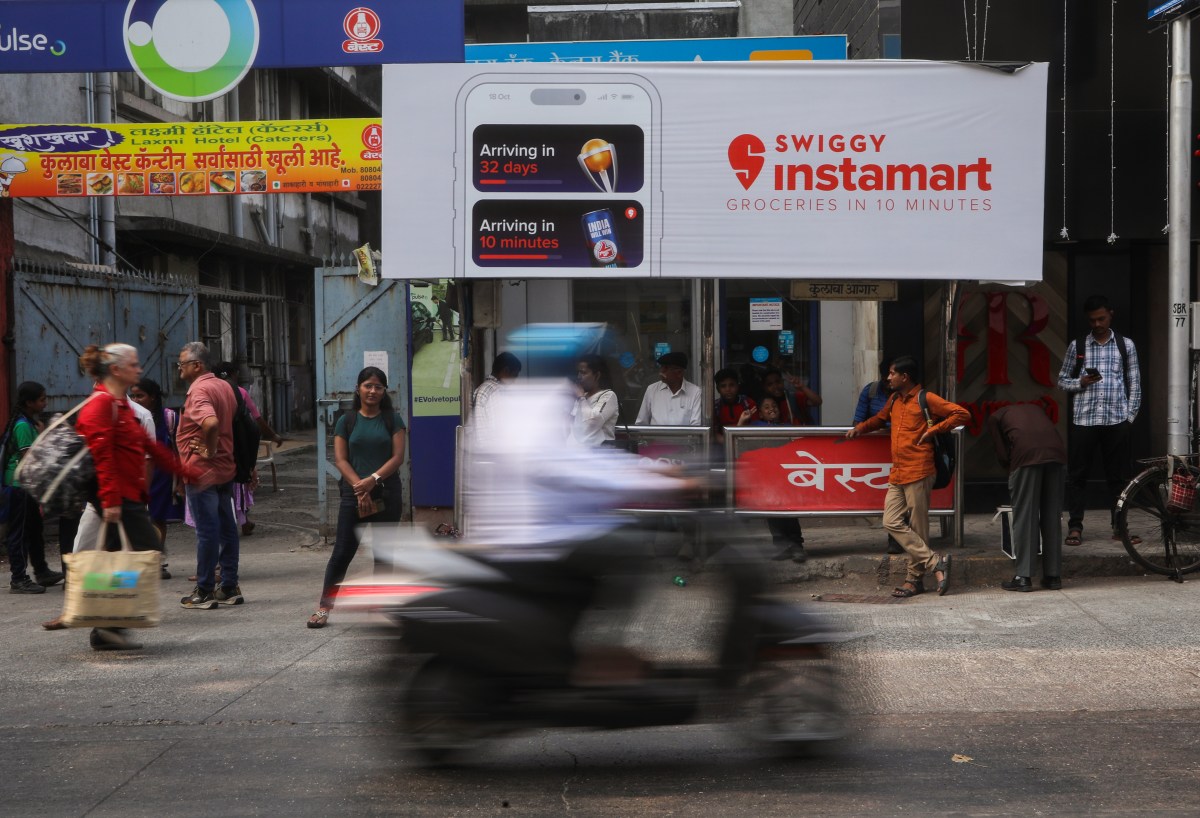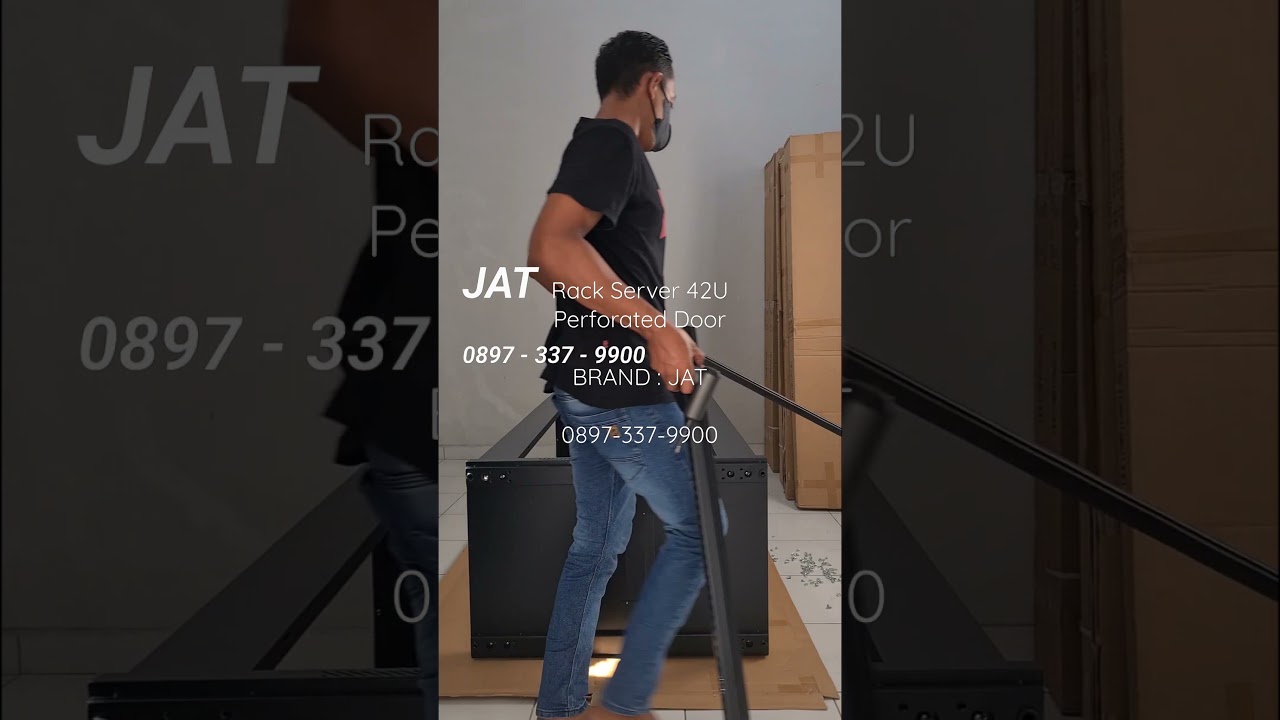Technology
California AI bill veto could allow smaller devs, models to ‘flourish’

Join our daily and weekly newsletters for the latest updates and exclusive content on industry-leading AI coverage. Learn More
California Gov. Gavin Newsom vetoed SB 1047, the bill that many believed would change the landscape of AI development in the state and the country. The veto published on Sunday could give AI companies the ability to show they can proactively protect users from AI risks.
SB 1047 would have required AI companies to include a “kill switch” to models, implement a written safety protocol and get a third-party safety auditor before starting to train models. It would have also given California’s attorney general access to an auditor’s report and the right to sue AI developers.
Some AI industry veterans believed the bill could have a chilling effect on AI development. Many in the industry thanked Newsom for vetoing the bill, noting the veto could protect open-source development in the future. Yann Le Cun, chief AI scientist at Meta and a vocal opponent of SB 1047, posted on X (formerly Twitter) that Newsom’s decision was “sensible.”
Prominent AI investor and general manager of Andreessen Horowitz Marc Andreessen said Newsom had sided “with California Dynamism, economic growth, and freedom to compute.”
Other industry players also weighed in, citing that while they believe regulation in the AI space is necessary, it should not make it harder for smaller developers and smaller AI models to flourish.
“The core issue isn’t the AI models themselves; it’s the applications of those models,” said Mike Capone, CEO of data integration platform Qlik, in a statement sent to VentureBeat. “As Newsom pointed out, smaller models are sometimes deployed in critical decision-making roles, while larger models handle more low-risk tasks. That’s why we need to focus on the contexts and use cases of AI, rather than the technology itself.”
He added regulatory frameworks should focus on “ensuring safe and ethical usage” and supporting best AI practices.
Coursera co-founder Andrew Ng also said the veto was “pro-innovation” and would protect open-source development.
It is not just corporations hailing the veto. Dean Ball, AI and tech policy expert at George Mason University’s Mercatus Center said the veto “is the right move for California, and for America more broadly.” Ball noted that the bill targeted model size thresholds that are becoming out of date, which would not encompass recent models like OpenAI’s o1.
Lav Varshney, associate professor of electrical and computer engineering, at the University of Illinois’ Grainger College of Engineering, noted the bill penalized original developers for the actions of those who use the technology.
“Since SB 1047 had provisions on the downstream uses and modifications of AI models, once it left the hands of the original developers, it would have made it difficult to continue innovating in an open-source manner,” Varshney told VentureBeat. “Shared responsibility among the original developers and those that fine-tune the AI to do things beyond the knowledge (and perhaps imagination) of the original developers seems more appropriate.”
Improving existing guard rails
The veto, though, could allow AI model developers to strengthen their AI safety policies and guardrails.
Kjell Carlsson, head of AI strategy at Domino Data Lab, said this presents an opportunity for AI companies to examine their governance practices closely and embed these in their workflows.
“Enterprise leaders should seize this opportunity to proactively address AI risks and protect their AI initiatives now. Rather than wait for regulation to dictate safety measures, organizations should enact robust AI governance practices across the entire AI lifecycle: establishing controls over access to data, infrastructure and models, rigorous model testing and validation, and ensuring output auditability and reproducibility,” said Carlsson.
Navrina Singh, founder of AI governance platform Credo AI, said in an interview with VentureBeat that while SB 1047 had good points around auditory rules and risk profiling, it showed there is still a need to understand what needs to be regulated around AI.
“We want governance to be at the center of innovation within AI, but we also believe that those who want to succeed with AI want to lead with trust and transparency because this is what customers are demanding of them,” Singh said. She added while it’s unclear if SB 1047’s veto would change the behaviors of developers, the market is already pushing companies to present themselves as trustworthy.
Disappointment from others
However, not everyone is hailing Newsom’s decision, with tech policy and safety groups condemning the decision.
Nicole Gill, co-founder and executive director of the non-profit Accountable Tech, said in a statement that Newsom’s decision “is a massive giveaway to Big Tech companies and an affront to all Americans who are currently the uncontested guinea pigs” of the AI industry.
“This veto will not ‘empower innovation’ – it only further entrenches the status quo where Big Tech monopolies are allowed to rake in profits without regard for our safety, even as their AI tools are already threatening democracy, civil rights, and the environment with unknown potential for other catastrophic harms,” Gill said.
The AI Policy Institute echoed this sentiment, with executive director Daniel Colson saying the decision to veto “is misguided, reckless, and out of step with the people he’s tasked with governing.”
The groups said California, where the majority of AI companies in the country are located, will allow AI development to go unchecked despite the public’s demand to rein in some of its capabilities.
The United States does not have any federal regulation around generative AI. While some states have developed policies on AI usage, no law imposes rules around the technology. The closest federal government policy in the country is an executive order from President Joe Biden. The executive order laid out a plan for agencies to use AI systems and asked AI companies to submit voluntarily models for evaluation before public release. OpenAI and Anthropic agreed to let the government test its models.
The Biden administration has also said it plans to monitor open-weight models for potential risks.
Source link
Servers computers
Cara Merakit Rack Server 42U Perforated door Merk JAT
Technology
The entire Vivo X200 family appears in all color options

The Vivo X200 puzzle is slowly coming together. Vivo confirmed the front and rear designs of the Vivo X200 recently, and now all three smartphones from the series have surfaced, in all color options.
The entire Vivo X200 series shows up online in all color options
The devices in question here are the Vivo X200, Vivo X200 Pro, and Vivo X200 Pro Mini. As expected, the three phones will look very similar. Designs of all three phones appeared on JD.com, one of China’s largest retailers.
If you check out the gallery below, you’ll get to see all three phones. You can see their backs and their sides here. All three models will have flat sides all around, which will be rounded slightly towards the edges. They will all have a circular camera island on the back, with ZEISS optics.
These designs lead us to believe that all three phones will have flat displays. We know that the Vivo X200 will, thanks to Vivo’s confirmation, but the other two will as well, almost certainly. The bezels will also be quite thin, though they may differ from one model to the next.
The Vivo X200 & Vivo X200 Pro Mini will have a similar camera layout
The Vivo X200 and Vivo X200 Pro Mini have a similar camera layout on the back. That layout does differ from what the Vivo X200 Pro offers so that phone will be easy to differentiate.
The Vivo X200 and Vivo X200 Pro will be available in the same color options. Moonlight Black, Moonlight White, Sapphire Blue, and Titanium colors are coming, as you can see.
The Vivo X200 Pro Mini, on the other hand, will be available in white, pink, green, and black colors. Vivo will likely use Moonlight Black and Moonlight White names here too, while we still don’t have official names for the pink and green models.
The Vivo X200 series will become official on October 14. That much has been confirmed by the company. These devices will launch in China, while there’s still no info regarding a global launch. They will be coming to more markets, though.
Technology
Amazon’s Fire HD 10 tablet drops to a record-low price ahead of October Prime Day

If you’ve been on the lookout for a killer deal on a perfectly decent tablet for streaming videos and catching up on some reading, hunt no more. Just ahead of the October edition of Prime Day, Amazon has , which is a discount of $65. This matches the tablet’s lowest price to date, which we saw .
The deal is for a model with 32GB of storage and ads on the lockscreen. Expanding the storage is easy enough thanks to the microSD slot, but to get rid of the lockscreen ads you’ll need to buy a different version (which, ).
The base Fire HD 10 has dropped back down to its lowest price to date. You can snap up one of Amazon’s tablets for $75 ahead of the October edition of Prime Day.
You probably won’t be doing as much creative work on a Fire HD tablet as you might on an iPad Pro. But for kicking back and catching up on a show or reading a Kindle book, Amazon’s tablet certainly does the trick. It has a 10.1-inch Full HD display with a promise of up to 13 hours of battery life. Amazon says it delivers 25 percent faster performance than the previous model and it has 3GB of storage.
You can use the tablet to keep up with family and friends using messaging apps or hop on video calls with the help of the 5MP front-facing camera. You can also use a stylus to sketch in various apps. There’s Alexa integration as well, of course — you can use the tablet to control smart compatible home devices and get a live view of connected security cameras.
One thing worth noting is that Amazon has yet to hold its usual fall devices event, so it may be using the October Prime Day sale to get rid of its current inventory of devices on the cheap before announcing upgraded models. Even if Amazon does have new tablets to show off in the coming weeks, though, you’ll still have a solid device in hand if you snap this one up.
Follow @EngadgetDeals on Twitter for the latest tech deals and buying advice in the lead up to October Prime Day 2024.
Servers computers
507019-B21 HP Blade Server Cabinet BLc7000 Rackmount Enclosure

507019-B21 HP Blade Server Cabinet BLc7000 Rackmount Enclosure
at Genisys. http://bit.ly/11qtfzv
Expert IT refurbishing for over 20 years.
(425)869.6055 .
source
Technology
Invesco raises its valuation of Swiggy to $13.3B

U.S. asset manager Invesco has raised the value of its stake in Swiggy, ascribing an implied valuation of about $13.3 billion to the Indian food-delivery and quick-commerce startup that is on track to go public in about a month.
In a disclosure on Tuesday, Invesco’s Developing Markets Fund said it valued the 28,844 shares it owns in Swiggy at $219.25 million as of the end of July 2024. The asset manager bought the shares in Swiggy for $190.47 million.
Invesco invested in Swiggy in early 2022, leading a $700 million round in the Bengaluru-based startup. The round valued the company at $10.7 billion.
Invesco has been fairly conservative with its assessment of its holdings in Swiggy. When the market dipped in 2023, Invesco lowered its estimated value of Swiggy to $5.5 billion at the end of July 2023, and held it at about $12.3 billion at the end of April this year.
Firms use different methodologies to calculate the valuation of privately-held companies. Generally, they use the market performance of a publicly listed rival to benchmark such companies. Zomato, Swiggy’s chief rival, has had a market cap between $22 billion and $30 billion in recent months.
Baron, another investor in Swiggy (though it owns fewer shares in the food delivery startup than Invesco), valued the Indian firm at $15.1 billion at the end of March this year.
“Swiggy is well positioned to benefit from structural growth in online food delivery in India, in our view,” Baron said in a letter in June. “We believe India’s food delivery industry is still in its infancy and will continue to scale over the next several years thanks to a growing middle class, rising disposable income, higher smartphone penetration, and structural shifts in consumer preferences driven by a tech-savvy, younger population. The industry has also become a duopoly between Swiggy and Zomato, which bodes well for the future profitability and scale of the company.”
The mark up in valuation comes at a time when many investors have cut the value of their holdings in several Indian and overseas startups. In a June update to its investors, wealth and asset manager 360 One said it valued VerSe, an Indian startup that operates the popular news aggregator Dailyhunt, at $2.9 billion, down from the $5 billion price tag at which VerSe raised its last private round in April 2022.
#60 One ascribed a valuation of about $900 million to online meat and seafood retailer Licious, and $1.9 billion to edtech company upGrad, TechCrunch previously reported.
Swiggy is seeking to raise as much as $1.4 billion in the IPO at a valuation range of $13 billion to $15 billion.
Servers computers
The New PowerEdge XE9680 Server

Boosts insights from growing data sets with AI acceleration technology designed for optimal performance, fastest time-to-value and air-cooled operations.
The Dell PowerEdge XE9680 is a no-compromise acceleration server designed to drive business insights in the most demanding Deep Learning applications such as large natural language processing models, recommendation engines, data analytics, and in HPC modeling and simulation workloads. Features:
* Delivering powerful AI training performance with 8x NVIDIA GPU accelerators
* Scale up capabilities with choice of NVIDIA H100 or A100 GPUs in air-cooled chassis
* DDR5 and PCIe Gen5
Learn More – https://www.dell.com/BXVWF2r3bOU .
source
-

 Womens Workouts1 week ago
Womens Workouts1 week ago3 Day Full Body Women’s Dumbbell Only Workout
-

 Technology2 weeks ago
Technology2 weeks agoWould-be reality TV contestants ‘not looking real’
-

 Science & Environment2 weeks ago
Science & Environment2 weeks ago‘Running of the bulls’ festival crowds move like charged particles
-

 News1 week ago
News1 week agoOur millionaire neighbour blocks us from using public footpath & screams at us in street.. it’s like living in a WARZONE – WordupNews
-

 Science & Environment2 weeks ago
Science & Environment2 weeks agoHow to wrap your mind around the real multiverse
-

 Science & Environment2 weeks ago
Science & Environment2 weeks agoHyperelastic gel is one of the stretchiest materials known to science
-

 Science & Environment2 weeks ago
Science & Environment2 weeks agoHow to unsnarl a tangle of threads, according to physics
-

 Science & Environment2 weeks ago
Science & Environment2 weeks agoITER: Is the world’s biggest fusion experiment dead after new delay to 2035?
-

 Science & Environment2 weeks ago
Science & Environment2 weeks agoMaxwell’s demon charges quantum batteries inside of a quantum computer
-

 Science & Environment2 weeks ago
Science & Environment2 weeks agoLiquid crystals could improve quantum communication devices
-

 Science & Environment2 weeks ago
Science & Environment2 weeks agoPhysicists are grappling with their own reproducibility crisis
-

 Science & Environment2 weeks ago
Science & Environment2 weeks agoSunlight-trapping device can generate temperatures over 1000°C
-

 News2 weeks ago
News2 weeks agoYou’re a Hypocrite, And So Am I
-

 Science & Environment2 weeks ago
Science & Environment2 weeks agoQuantum ‘supersolid’ matter stirred using magnets
-

 Sport2 weeks ago
Sport2 weeks agoJoshua vs Dubois: Chris Eubank Jr says ‘AJ’ could beat Tyson Fury and any other heavyweight in the world
-

 Science & Environment2 weeks ago
Science & Environment2 weeks agoWhy this is a golden age for life to thrive across the universe
-

 Science & Environment2 weeks ago
Science & Environment2 weeks agoQuantum forces used to automatically assemble tiny device
-

 Science & Environment2 weeks ago
Science & Environment2 weeks agoCaroline Ellison aims to duck prison sentence for role in FTX collapse
-

 Science & Environment2 weeks ago
Science & Environment2 weeks agoNuclear fusion experiment overcomes two key operating hurdles
-

 Science & Environment2 weeks ago
Science & Environment2 weeks agoLaser helps turn an electron into a coil of mass and charge
-

 Science & Environment2 weeks ago
Science & Environment2 weeks agoNerve fibres in the brain could generate quantum entanglement
-

 Science & Environment2 weeks ago
Science & Environment2 weeks agoTime travel sci-fi novel is a rip-roaringly good thought experiment
-

 News2 weeks ago
News2 weeks agoIsrael strikes Lebanese targets as Hizbollah chief warns of ‘red lines’ crossed
-

 CryptoCurrency2 weeks ago
CryptoCurrency2 weeks agoCardano founder to meet Argentina president Javier Milei
-

 Science & Environment1 week ago
Science & Environment1 week agoMeet the world's first female male model | 7.30
-

 Womens Workouts1 week ago
Womens Workouts1 week agoBest Exercises if You Want to Build a Great Physique
-

 Science & Environment2 weeks ago
Science & Environment2 weeks agoWhy we need to invoke philosophy to judge bizarre concepts in science
-

 CryptoCurrency2 weeks ago
CryptoCurrency2 weeks agoBitcoin miners steamrolled after electricity thefts, exchange ‘closure’ scam: Asia Express
-

 CryptoCurrency2 weeks ago
CryptoCurrency2 weeks agoDZ Bank partners with Boerse Stuttgart for crypto trading
-

 CryptoCurrency2 weeks ago
CryptoCurrency2 weeks agoEthereum is a 'contrarian bet' into 2025, says Bitwise exec
-

 Womens Workouts1 week ago
Womens Workouts1 week agoEverything a Beginner Needs to Know About Squatting
-

 Womens Workouts1 week ago
Womens Workouts1 week ago3 Day Full Body Toning Workout for Women
-

 Science & Environment2 weeks ago
Science & Environment2 weeks agoA slight curve helps rocks make the biggest splash
-

 News2 weeks ago
News2 weeks ago▶️ Media Bias: How They Spin Attack on Hezbollah and Ignore the Reality
-

 Science & Environment2 weeks ago
Science & Environment2 weeks agoQuantum time travel: The experiment to ‘send a particle into the past’
-

 CryptoCurrency2 weeks ago
CryptoCurrency2 weeks agoDorsey’s ‘marketplace of algorithms’ could fix social media… so why hasn’t it?
-

 CryptoCurrency2 weeks ago
CryptoCurrency2 weeks agoRedStone integrates first oracle price feeds on TON blockchain
-

 CryptoCurrency2 weeks ago
CryptoCurrency2 weeks agoBitcoin bulls target $64K BTC price hurdle as US stocks eye new record
-

 CryptoCurrency2 weeks ago
CryptoCurrency2 weeks agoLow users, sex predators kill Korean metaverses, 3AC sues Terra: Asia Express
-

 Sport2 weeks ago
Sport2 weeks agoUFC Edmonton fight card revealed, including Brandon Moreno vs. Amir Albazi headliner
-

 CryptoCurrency2 weeks ago
CryptoCurrency2 weeks agoBlockdaemon mulls 2026 IPO: Report
-

 News2 weeks ago
News2 weeks agoBrian Tyree Henry on voicing young Megatron, his love for villain roles
-

 CryptoCurrency2 weeks ago
CryptoCurrency2 weeks agoCoinbase’s cbBTC surges to third-largest wrapped BTC token in just one week
-

 News1 week ago
News1 week agoFour dead & 18 injured in horror mass shooting with victims ‘caught in crossfire’ as cops hunt multiple gunmen
-

 Travel7 days ago
Travel7 days agoDelta signs codeshare agreement with SAS
-

 Politics6 days ago
Politics6 days agoHope, finally? Keir Starmer’s first conference in power – podcast | News
-

 Science & Environment2 weeks ago
Science & Environment2 weeks agoBeing in two places at once could make a quantum battery charge faster
-

 Science & Environment2 weeks ago
Science & Environment2 weeks agoA new kind of experiment at the Large Hadron Collider could unravel quantum reality
-

 Science & Environment2 weeks ago
Science & Environment2 weeks agoHow one theory ties together everything we know about the universe
-

 Science & Environment2 weeks ago
Science & Environment2 weeks agoFuture of fusion: How the UK’s JET reactor paved the way for ITER
-

 Science & Environment2 weeks ago
Science & Environment2 weeks agoHow do you recycle a nuclear fusion reactor? We’re about to find out
-

 Science & Environment2 weeks ago
Science & Environment2 weeks agoTiny magnet could help measure gravity on the quantum scale
-

 CryptoCurrency2 weeks ago
CryptoCurrency2 weeks agoCrypto scammers orchestrate massive hack on X but barely made $8K
-

 CryptoCurrency2 weeks ago
CryptoCurrency2 weeks ago‘No matter how bad it gets, there’s a lot going on with NFTs’: 24 Hours of Art, NFT Creator
-

 CryptoCurrency2 weeks ago
CryptoCurrency2 weeks agoSEC asks court for four months to produce documents for Coinbase
-
Business2 weeks ago
How Labour donor’s largesse tarnished government’s squeaky clean image
-

 Technology2 weeks ago
Technology2 weeks agoiPhone 15 Pro Max Camera Review: Depth and Reach
-

 News2 weeks ago
News2 weeks agoBrian Tyree Henry on voicing young Megatron, his love for villain roles
-

 Womens Workouts1 week ago
Womens Workouts1 week agoHow Heat Affects Your Body During Exercise
-

 Womens Workouts1 week ago
Womens Workouts1 week agoKeep Your Goals on Track This Season
-

 Science & Environment2 weeks ago
Science & Environment2 weeks agoUK spurns European invitation to join ITER nuclear fusion project
-

 News2 weeks ago
News2 weeks agoChurch same-sex split affecting bishop appointments
-

 Technology2 weeks ago
Technology2 weeks agoFivetran targets data security by adding Hybrid Deployment
-

 CryptoCurrency2 weeks ago
CryptoCurrency2 weeks ago$12.1M fraud suspect with ‘new face’ arrested, crypto scam boiler rooms busted: Asia Express
-

 CryptoCurrency2 weeks ago
CryptoCurrency2 weeks agoDecentraland X account hacked, phishing scam targets MANA airdrop
-

 CryptoCurrency2 weeks ago
CryptoCurrency2 weeks agoCertiK Ventures discloses $45M investment plan to boost Web3
-

 CryptoCurrency2 weeks ago
CryptoCurrency2 weeks agoBeat crypto airdrop bots, Illuvium’s new features coming, PGA Tour Rise: Web3 Gamer
-

 CryptoCurrency2 weeks ago
CryptoCurrency2 weeks agoTelegram bot Banana Gun’s users drained of over $1.9M
-

 CryptoCurrency2 weeks ago
CryptoCurrency2 weeks ago‘Silly’ to shade Ethereum, the ‘Microsoft of blockchains’ — Bitwise exec
-

 CryptoCurrency2 weeks ago
CryptoCurrency2 weeks agoEthereum falls to new 42-month low vs. Bitcoin — Bottom or more pain ahead?
-
Business2 weeks ago
Thames Water seeks extension on debt terms to avoid renationalisation
-
Politics2 weeks ago
‘Appalling’ rows over Sue Gray must stop, senior ministers say | Sue Gray
-

 Science & Environment1 week ago
Science & Environment1 week agoCNN TÜRK – 🔴 Canlı Yayın ᴴᴰ – Canlı TV izle
-

 News1 week ago
News1 week agoWhy Is Everyone Excited About These Smart Insoles?
-

 News5 days ago
News5 days agoUS Newspapers Diluting Democratic Discourse with Political Bias
-

 Politics2 weeks ago
Politics2 weeks agoTrump says he will meet with Indian Prime Minister Narendra Modi next week
-

 Technology2 weeks ago
Technology2 weeks agoCan technology fix the ‘broken’ concert ticketing system?
-

 Health & fitness2 weeks ago
Health & fitness2 weeks agoThe secret to a six pack – and how to keep your washboard abs in 2022
-

 Science & Environment2 weeks ago
Science & Environment2 weeks agoSingle atoms captured morphing into quantum waves in startling image
-

 Science & Environment2 weeks ago
Science & Environment2 weeks agoHow Peter Higgs revealed the forces that hold the universe together
-

 Science & Environment2 weeks ago
Science & Environment2 weeks agoA tale of two mysteries: ghostly neutrinos and the proton decay puzzle
-

 CryptoCurrency2 weeks ago
CryptoCurrency2 weeks ago2 auditors miss $27M Penpie flaw, Pythia’s ‘claim rewards’ bug: Crypto-Sec
-

 CryptoCurrency2 weeks ago
CryptoCurrency2 weeks agoLouisiana takes first crypto payment over Bitcoin Lightning
-

 CryptoCurrency2 weeks ago
CryptoCurrency2 weeks agoJourneys: Robby Yung on Animoca’s Web3 investments, TON and the Mocaverse
-

 CryptoCurrency2 weeks ago
CryptoCurrency2 weeks ago‘Everything feels like it’s going to shit’: Peter McCormack reveals new podcast
-

 CryptoCurrency2 weeks ago
CryptoCurrency2 weeks agoSEC sues ‘fake’ crypto exchanges in first action on pig butchering scams
-

 CryptoCurrency2 weeks ago
CryptoCurrency2 weeks agoBitcoin price hits $62.6K as Fed 'crisis' move sparks US stocks warning
-

 CryptoCurrency2 weeks ago
CryptoCurrency2 weeks agoVonMises bought 60 CryptoPunks in a month before the price spiked: NFT Collector
-

 CryptoCurrency2 weeks ago
CryptoCurrency2 weeks agoVitalik tells Ethereum L2s ‘Stage 1 or GTFO’ — Who makes the cut?
-

 News2 weeks ago
News2 weeks agoBrian Tyree Henry on his love for playing villains ahead of “Transformers One” release
-

 Womens Workouts1 week ago
Womens Workouts1 week agoWhich Squat Load Position is Right For You?
-

 News1 week ago
News1 week agoBangladesh Holds the World Accountable to Secure Climate Justice
-

 TV1 week ago
TV1 week agoCNN TÜRK – 🔴 Canlı Yayın ᴴᴰ – Canlı TV izle
-

 Technology1 week ago
Technology1 week agoRobo-tuna reveals how foldable fins help the speedy fish manoeuvre
-

 Technology2 weeks ago
Technology2 weeks agoIs carbon capture an efficient way to tackle CO2?
-

 Health & fitness2 weeks ago
Health & fitness2 weeks agoThe maps that could hold the secret to curing cancer
-

 Science & Environment2 weeks ago
Science & Environment2 weeks agoThe physicist searching for quantum gravity in gravitational rainbows
-

 CryptoCurrency2 weeks ago
CryptoCurrency2 weeks agoHelp! My parents are addicted to Pi Network crypto tapper
-

 CryptoCurrency2 weeks ago
CryptoCurrency2 weeks agoCZ and Binance face new lawsuit, RFK Jr suspends campaign, and more: Hodler’s Digest Aug. 18 – 24
-

 Fashion Models2 weeks ago
Fashion Models2 weeks agoMixte



You must be logged in to post a comment Login